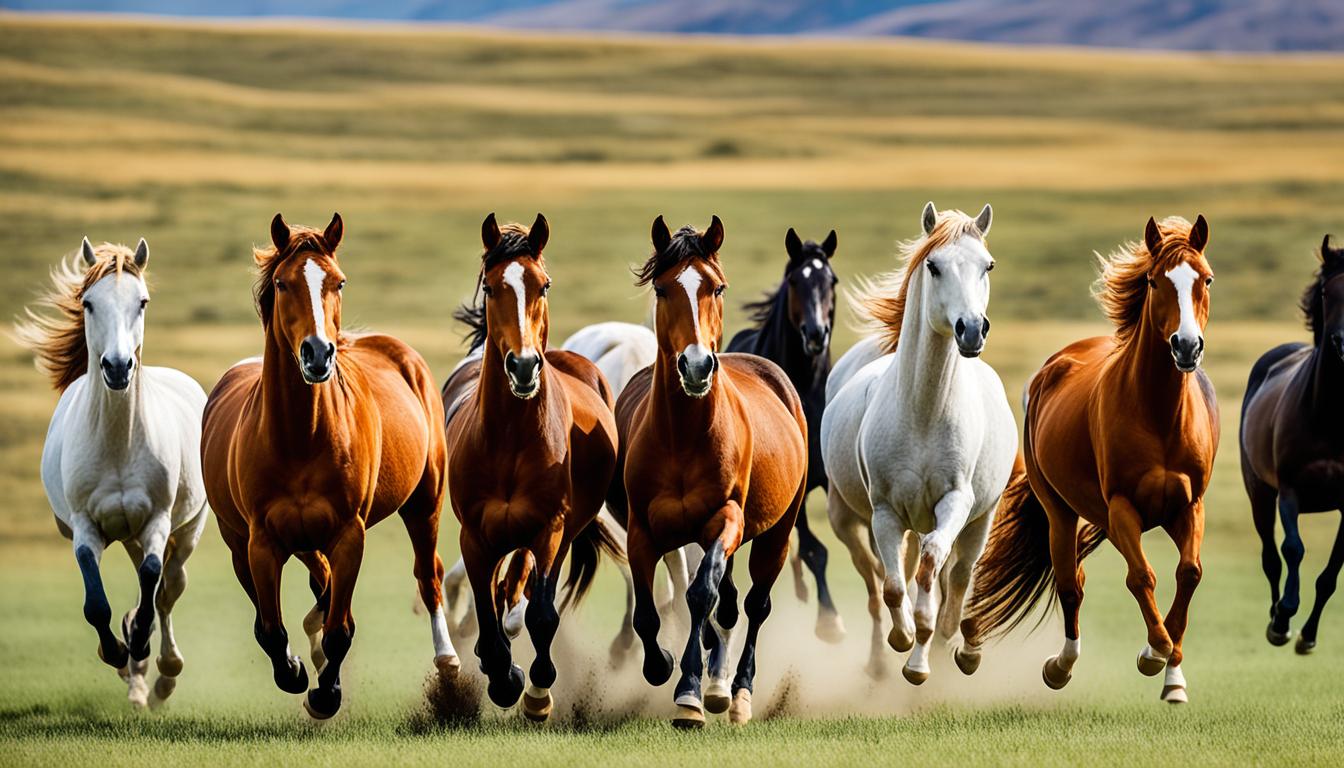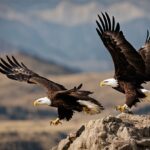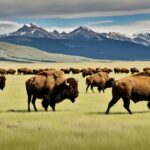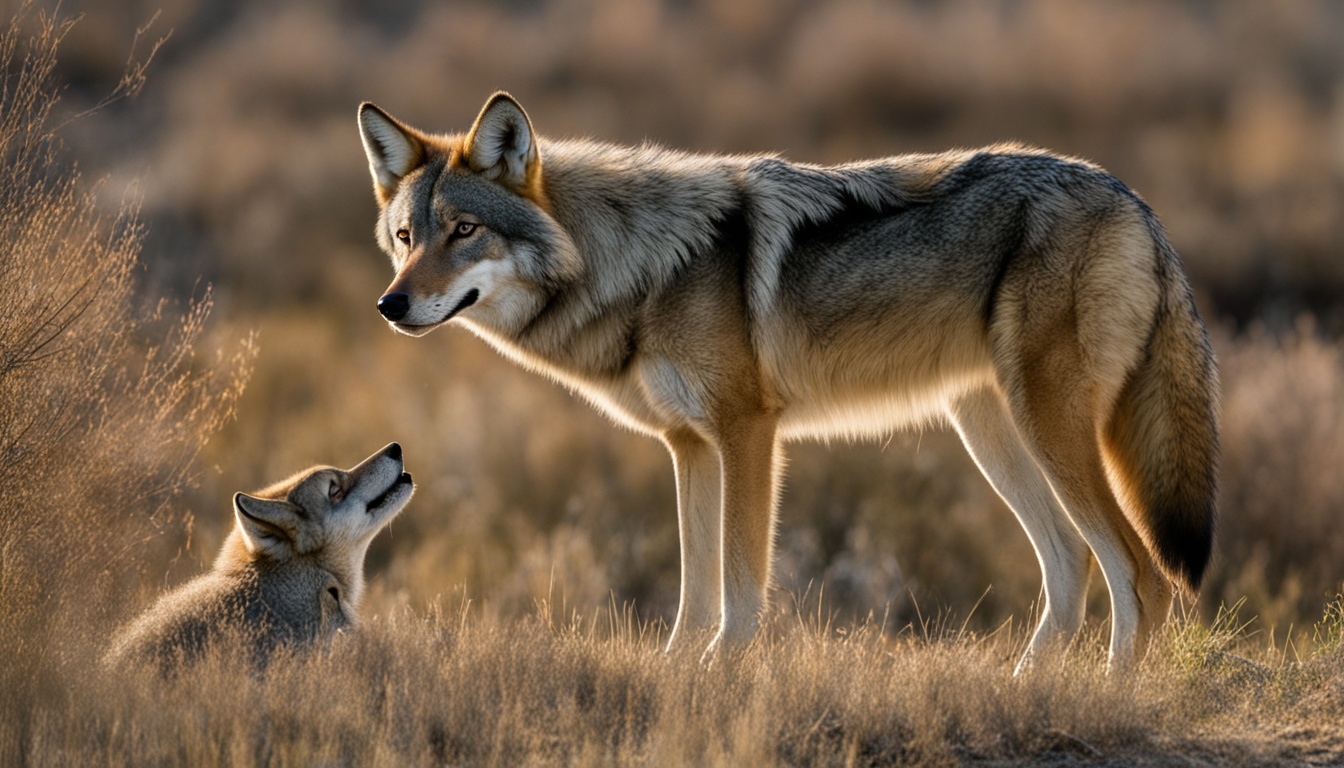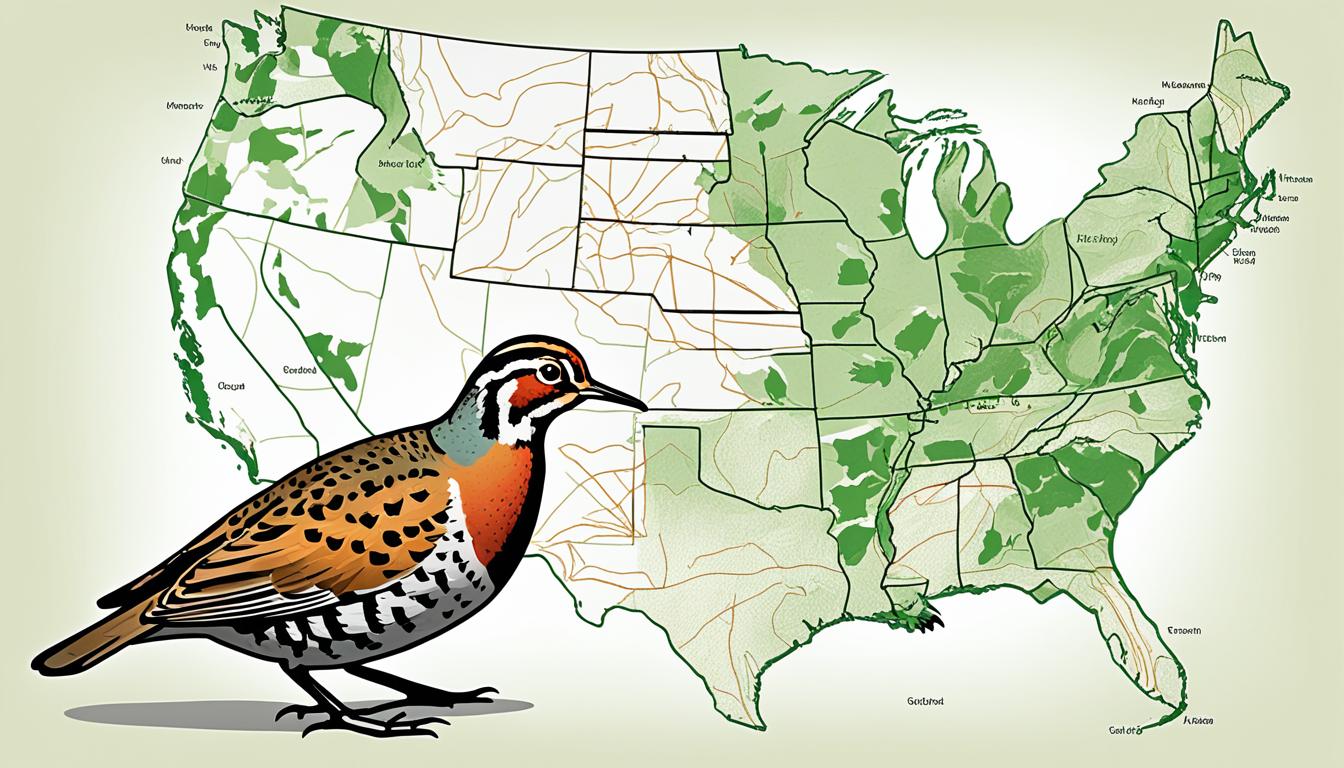Have you ever wondered if the majestic wild horses still roam America’s vast lands? They are indeed a symbol of untamed freedom and the pioneer spirit.
American wild horse herds mainly live in government-protected areas in the west. Despite myths about them harming the land, it’s actually cattle and sheep that do more damage.
Their numbers and safety are watched over by federal groups. This care keeps the horses safe and the lands from getting too worn out.
Overview of Wild Horses in America
Are there any wild horses in the USA? You bet! The American West is their kingdom. Mustangs are these wild, free spirits. They roam the land, showing what true freedom means. The mustangs in the USA came from domesticated horses brought over by Spanish explorers in the 16th century. They’ve become a part of the wild, playing a key role in nature after native species disappeared.
These horses are truly tough. They live in the rough lands and deal with tough weather in western states. They’ve faced fights over their future and the land they live on. But they still stand strong. So, yes, wild horses are part of the USA’s untamed spirit. They stand for the wild lands of the country, balancing on the edge of debates about nature’s needs versus our own.
Many people talk about what to do with these wild horses. Some worry about the land and resources they use. Others say they’re a vital part of nature. So, people argue about the best way to deal with them. The American mustang holds a special place in the US, stirring talks about how to keep the land and horses healthy.
Current Population of Wild Horses in the United States
The wild horse population in America is mainly mustangs and feral horses. They live in specific areas known as Herd Management Areas (HMAs) in western states. Places like Nevada have many of these beautiful animals.
Mustangs in the United States
Mustangs are celebrated for their strength and unique genetics. They’re mainly found in Nevada and Utah. These horses have learned to survive in tough conditions. Unfortunately, false ideas about too many horses often ignore the real situation. Local growth rates and human activities like roundups shape their numbers.
Feral Horses in the USA
In the USA, feral horses of different types face similar difficulties. These include being hunted, having few places to live, and human actions. People who care about these horses want to find a kind way to make sure their numbers don’t harm the land. They pitch using a vaccine called PZP as a birth control method. This approach aims to keep a healthy balance among the American wild horses.
| State | Estimated Population | Key Challenges |
|---|---|---|
| Nevada | 25,000 | Management Policies, Habitat Fragmentation |
| Wyoming | 4,000 | Limited Habitats, Predation |
| Utah | 6,000 | Roundups, Overgrazing Claims |
Are there any wild horses in the USA?
Yes, there are wild horses in the USA. They are a symbol of the American frontier. Today, they move through the vast lands of the western states. They live mainly in special areas called ‘Herd Management Areas’.
These beautiful creatures are well taken care of. The government makes sure they have enough space to live. They look after the land where the horses run.
“The continuity of wild horses in the USA is ensured through landmark legislation and diligent efforts by agencies like the Bureau of Land Management.”
When thinking about wild horses, look west in the USA. There, these majestic animals still run free. Their presence reminds us of the adventurous spirit of the past. They show us that even today, the wild can thrive.
Despite some challenges, these horses enjoy a life of freedom. This is all thanks to efforts to protect their homes on public lands.
Wild horses in the USA
They stand as a powerful symbol of freedom and strength. Their story is a blend of nature and the care people provide. A story of living in harmony.
Historical Background of American Wild Horses
America’s wild horses were reintroduced by Spanish explorers. These explorers, like Cortez, brought them back as they explored. Since then, these beautiful animals have deeply impacted American life and the land they roam upon.
Spanish Introduction in the 1500s
The Spanish introduction in the 1500s was a turning point for wild horses. The horses brought by Spanish conquistadors flourished in North America. They quickly became what we now call American wild horses.
These horses became very important to Native American tribes. They helped with both daily life and moving from place to place.
Wild Horse Protection Acts
Over time, the number of wild horses dwindled because of people. Luckily, in 1971, the Wild Free-Roaming Horse & Burro Act was passed to protect them. This act was designed to prevent the harm to these animals.
Velma Johnston, known as “Wild Horse Annie,” was key in getting laws passed to protect these horses. Thanks to her efforts, wild horse protection acts are still in place. They ensure these iconic creatures are treated with care.
| Event | Details |
|---|---|
| Spanish Introduction in the 1500s | Conquistadors like Cortez reintroduced horses to North America, laying the foundation for modern wild horse populations. |
| Wild Horse Protection Acts | Notably, the Wild Free-Roaming Horse & Burro Act of 1971 protected wild horses from extermination and ensured their humane treatment. |
Herd Management Areas (HMAs)
Herd Management Areas (HMAs) are key in keeping wild horse numbers in check in the western U.S. They’re specific areas on public lands. These places let wild horses live while also managing other land use needs.
States with Significant Wild Horse Populations
Nevada, Wyoming, and Utah are big states for these beautiful animals. Nevada has the most HMAs, offering huge spaces for them. Wyoming and Utah also play important roles in caring for wild horses.
Role of Bureau of Land Management
The Bureau of Land Management (BLM) takes charge of these areas. BLM looks after the lands and the animals. It uses roundups, adoptions, and sound policies to keep everything in balance.
BLM uses diverse methods to properly look after these wild spaces. They work to deal with issues like too much grazing and broken habitat. This helps keep the environment and the horses healthy.
Challenges Facing Wild Horse Populations
Wild horses in America face big problems. These affect their numbers and the health of the lands they live on. These issues get wrongly blamed on the horses, making their fight harder.
Overgrazing and Land Degradation
People often say wild horses harm the land by eating too much and making it worse. But, the truth is, they do less damage than cows and sheep. Wild horses move around to eat, which gives plants a chance to grow back. Cows and sheep, on the other hand, stay in one place and can ruin the land more. This misunderstanding leads to bad choices about how to handle the horses and the land.
Competition with Livestock
Cattle and sheep also eat the grass on these lands. Because of this, there’s less food for the wild horses. The power of the ranching industry often means that decisions favor cows and sheep over the wild horses. This can make it hard for the horses to find places to live. In some cases, they are even forced to leave, which isn’t good for keeping their numbers up.
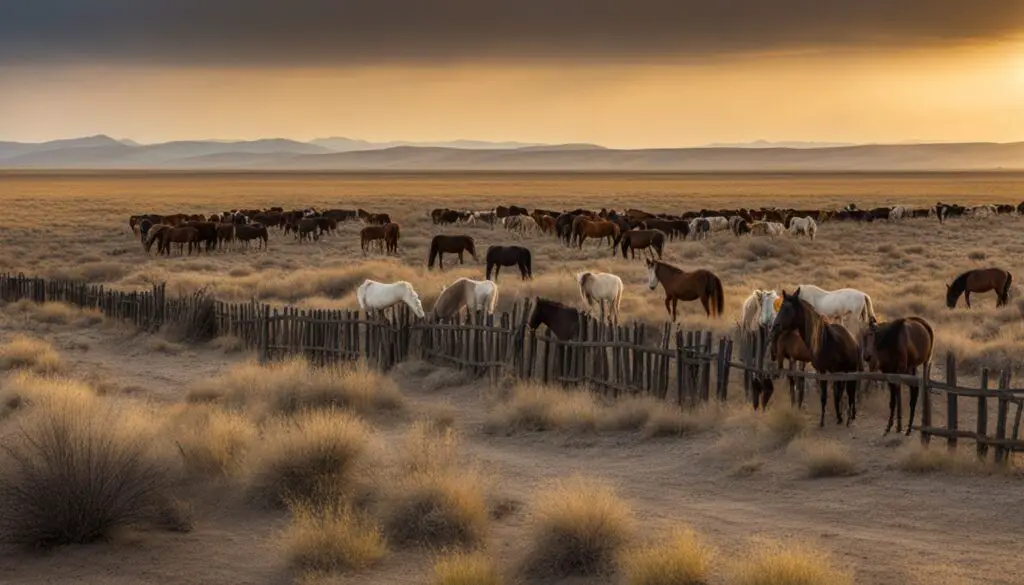
| Challenge | Impact | Contributing Factors |
|---|---|---|
| Overgrazing and Land Degradation | Minimal impact compared to livestock | Misconceptions, inadequate management policies |
| Competition with Livestock | Reduced forage and habitats for wild horses | Ranching interests, land use priorities |
Conservation Efforts and Management Practices
Wild horse preservation uses many methods that are both kind and based on science. They aim to keep horse populations in check and protect their home’s balance. These efforts are crucial for the environment.
PZP Immunocontraceptive Vaccine
The PZP immunocontraceptive vaccine is a key part of this work. It helps stop the horses from having babies in a way that doesn’t harm them. This keeps the horse herds healthy without hurting their social groups. It’s a win for everyone, the horses, and those working to protect them.
Alternative Management Strategies
More than just vaccines, many ways help the horses and their lands. Alternative management strategies look at the big picture. They use ideas like using different fields for eating, fixing the land, and working with local people. This thinking is key for making sure the horses and their homes are well cared for.
Let’s compare different ways of managing horse populations:
| Management Strategy | Effectiveness | Ethical Implications |
|---|---|---|
| PZP Immunocontraceptive Vaccine | High | Non-invasive, maintains natural behaviors |
| Surgical Sterilization | Moderate | Invasive, disrupts herd dynamics |
| Roundups and Removals | Varies | Stressful, costly, and disrupts habitats |
| Habitat Restoration | High | Supports ecological balance, non-invasive |
Where to Find Wild Horses in the US
The United States has many places to see wild horses in their natural environment. For example, the Virginia Range in Nevada is home to many wild horses. You can see these majestic animals living freely in the wild.
In North Dakota’s Theodore Roosevelt National Park, wild horses are part of a unique scene. They’re surrounded by interesting land formations and different types of animals. The park protects these horses, allowing you to see how they live in a safe space. You’ll also find the Pryor Mountain wild horses in the Montana-Wyoming area. These horses are known for their special traits and long history.
For a coastal experience, the Outer Banks in North Carolina and Assateague Island are great options. Here, wild horses roam near the water, feeding on marsh grass. When you visit these places, make sure to give the horses their space. This allows them to act naturally without being disturbed. These spots are unique and offer a special way to connect with America’s wild past.

